As silly as the topic of this article sounds, there may come a time when you need to take your betta fish along with you on a trip farther than from point A to point B in your own home. Traveling with your bettas is not a nerve-racking situation. Actually, I lied. Of course nerves will be racked anytime you have to take your betta fish on a trip. Hopefully after reading this article, at least some of your nerves will be spared from racking.
As a prequel to this not-really-a-guide guide, pretty much everything suggested herein will be based on the assumption that your betta fish normally lives in a tank that is not cycled. The reason for this is that it’s a pretty safe bet that most people that own bettas don’t have them in cycled tanks, or know what cycling is in general. If you yourself do have your betta in a cycled aquarium, you can modify parts of the traveling process to meet those needs. That will have more to do with what you have to do once you make it back home after your travels.
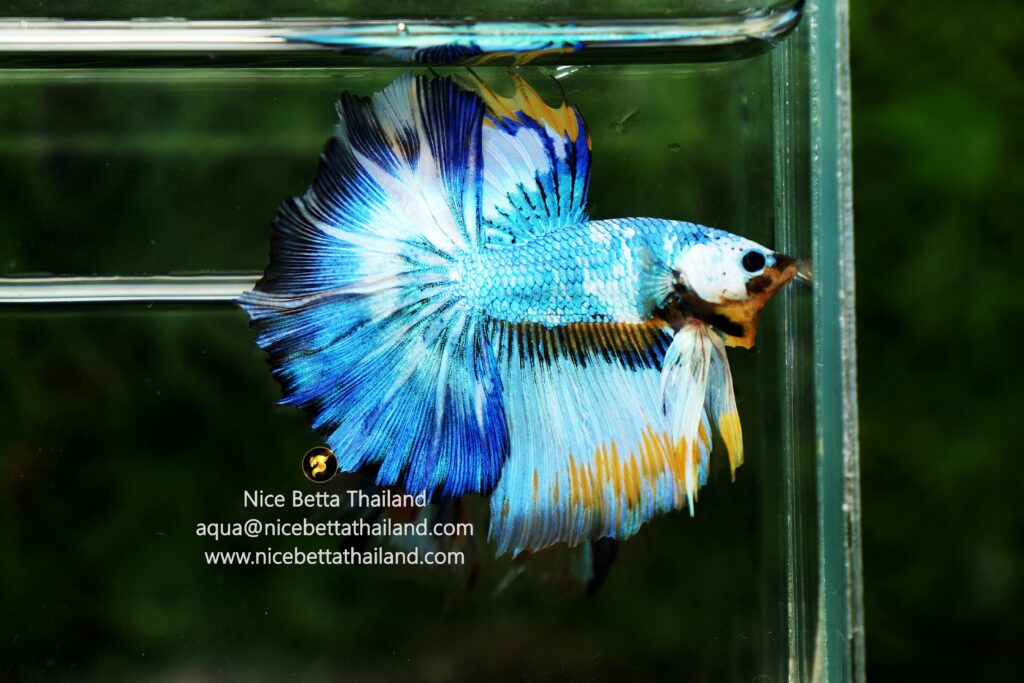
Be it you are finally able to take that vacation you’ve been counting down the days for, or heading off to college and have to option to bring along your fishy friend, pet fish plus travel can make for a uniquely stressful situation. As long as you’ve done your pre-travel homework and ready to go the extra few steps to keep your betta fish healthy along the way, you should be able to provide a relatively low stress experience for your fish throughout the journey.
Because Siamese fighting fish are living, breathing creatures and not inanimate objects that can be relied on to do things like stay put wherever you left them, there are really no hard and fast rules here. You need to assess every situation for yourself to the best of your abilities. This guide on traveling with your betta is more of a base set of suggestions. If you personally know of a better way of getting a particular thing done, go for it. A lot of people really don’t know where to start though, and that is why this guide is here in the first place.
Betta Fish Trip Gear
Ok, lets get right down into it. If your are planning any sort of trip by car, take a look at this list of betta approved necessities:
- Small Plastic Container (Travel Fish Tank)
- Pre-treated water
- Aquarium Salt
- Fish Net
- Thermometer
- Cloth and Paper Towels
- Fish Food Should be Pellets
- Water Conditioner
- Portable Aerator
To begin with, the small plastic container mentioned at the top of the list should be clear. That may seem like a no brainer, I just want to make sure that your poor betta fish has the option of seeing Vegas as you drive by…
On top of that, the container has to be able to hold at least a half-gallon of water. More in this case is always better, it really depends on what you think you can handle safely on your trip. And when I speak about safety, I’m talking about for your fish. Your safety is your own concern.
Some people have more than one betta fish they need to transport. If you are one of these people, please use a divider of some type, or better, use separate containers. These are fighting fish mind you. You don’t ever want to keep two bettas in the same container, even if it is only for a “short drive”. Got it? Thanks.
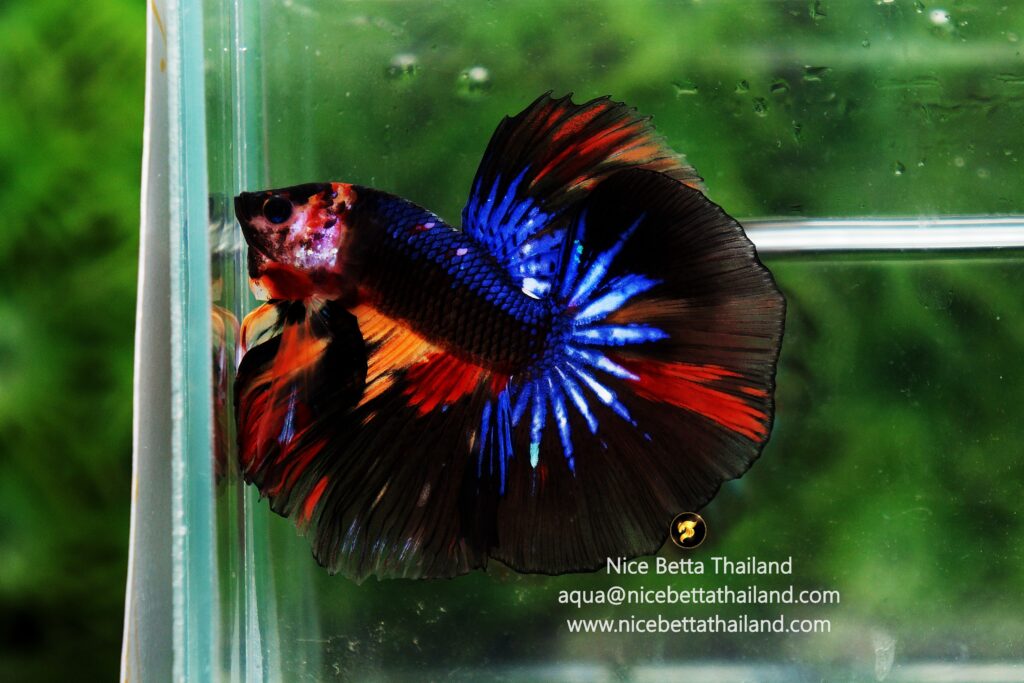
I should also point out here that traveling with a fully equipped and filled aquarium is never a safe or smart idea. This is especially so for glass aquariums. Water shifting and sloshing back and forth in a standard betta aquarium not only can spill causing damage to anything around it, it may also cause the glass to shatter. You’d be surprised how much force 10 gallons of water has when shifting from one side of an aquarium to the other. Please be careful. Don’t transport a full aquarium.
An example of a good container to keep your traveling betta in would be a half gallon food storage container with a tight fitting lid. Mentioning name brands online can get me in trouble, but if you can figure out what I mean by RubberMade, that would work out just fine. If you feel so inspired, you could go the extra step and get your self a dedicated (albeit cheap anyway) travel aquarium.
Preparing for betta fish travel
You don’t want to be caught having to prep everything the day of your trip. Please try to prepare as much as you can, if not everything, at least the day before. The most stressful part of any travel adventure happens the day of your trip. At least, it’s that way for me and 99% of the population. You want to have your head screwed on straight when getting ready to take your betta out into the world. The only thing left for you to remember on the day of your trip is the betta itself.
Some people prefer to skip a betta feeding the day before the traveling begins. I think that opinion is subjective and really depends on what your existing routine is. Also, bettas are creatures of habit. They really like their routines and can easily have stress added onto them if something is “different”. If you have an already established feeding routine, I’d suggest sticking to it.
Everybody seems to have a different way for prepping the water their betta will swim in. Whatever your chosen method of doing betta water prep is, do it the day before. If you have a specific routine for changing out and adding in water to the betta’s tank, you can stick to it. What you do want to pay attention to though is that you don’t make the betta’s travel water too much different than the water he/she is used to normally. For most, that really won’t be a problem, but I’m sure that there are some scenarios where that may be a tad difficult. If you find that you can’t match up the water perfectly the night before, make it as gosh darn close as you can.
If you are new to changing out water and want a quick walk through using tap water:
Find yourself a big, clean container. And by clean, I mean really clean. Don’t just blow it out and call it good. Really clean it well by hand. This will be the container that you prep the new tank water in so, you don’t want anything thing that would cause contamination.
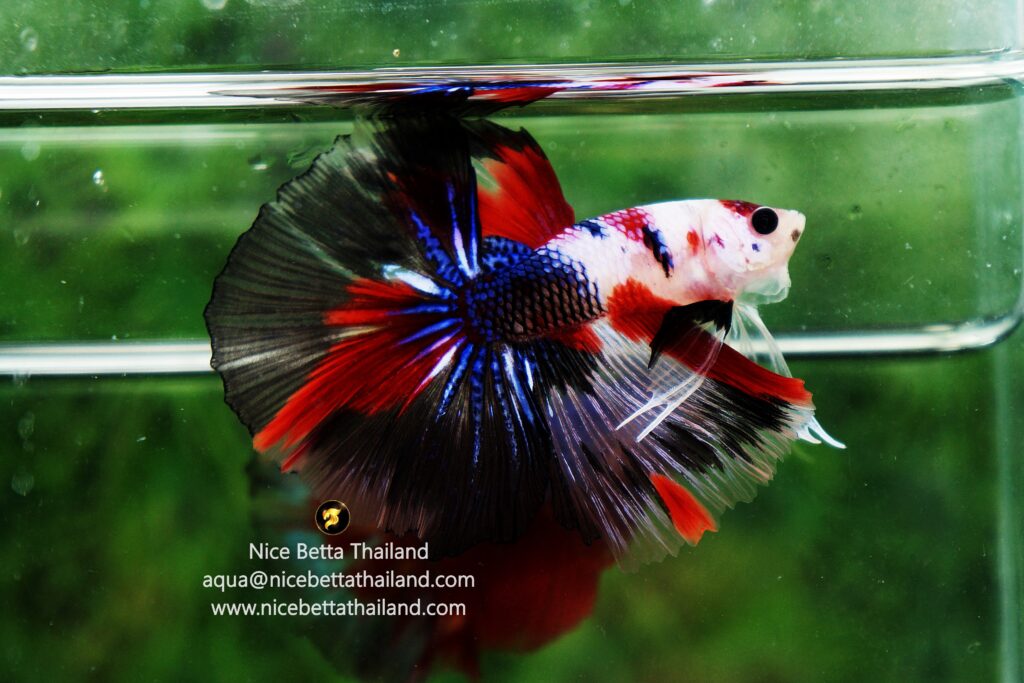
Fill that clean container with water from the tap.
Use a good, betta approved water conditioner. This product by Seachem is what many highly experienced betta enthusiasts swear by. Not only does it remove chlorine and chloramine in the tap water, it also detoxifies ammonia, nitrates and nitrites. Really good stuff. Definitely something to keep handy even after your trip. Add this to the tap water in the clean container. Follow the dang directions on the label of the water conditioner please!
This is the really hard part. Let the newly conditioned tap water in the clean container… sit overnight. I know. That’s asking too much work. Do it anyway. If you do ever find yourself in a pinch for time though, you can let it sit for about half an hour. The longer you let it sit though, the better the conditioner will work. The water conditioner is neutralizing the poisonous stuff in the tap water that will harm your betta fish.
While the above few paragraphs where basic instructions for a general tank water prep, this part is for the traveling water specifically. You are going to want to add some aquarium salt to that water your betta will be transported in. Aquarium salt has many uses, but in this particular case we are looking to use it for its de-stressing magic abilities. You are going to want to add one teaspoon of aquarium salt per gallon of water. That would be a half teaspoon for a half gallon of water. Add the correct amount of aquarium salt to the volume of water you will be using in the water prep container and mix it very thoroughly. You will want to stir this up once again the morning of your trip. If you add aquarium salt straight to the tank your betta is swimming in, it will cause burns on the betta. Very bad stuff. If you pre-mixed it the night before, you will be fine.
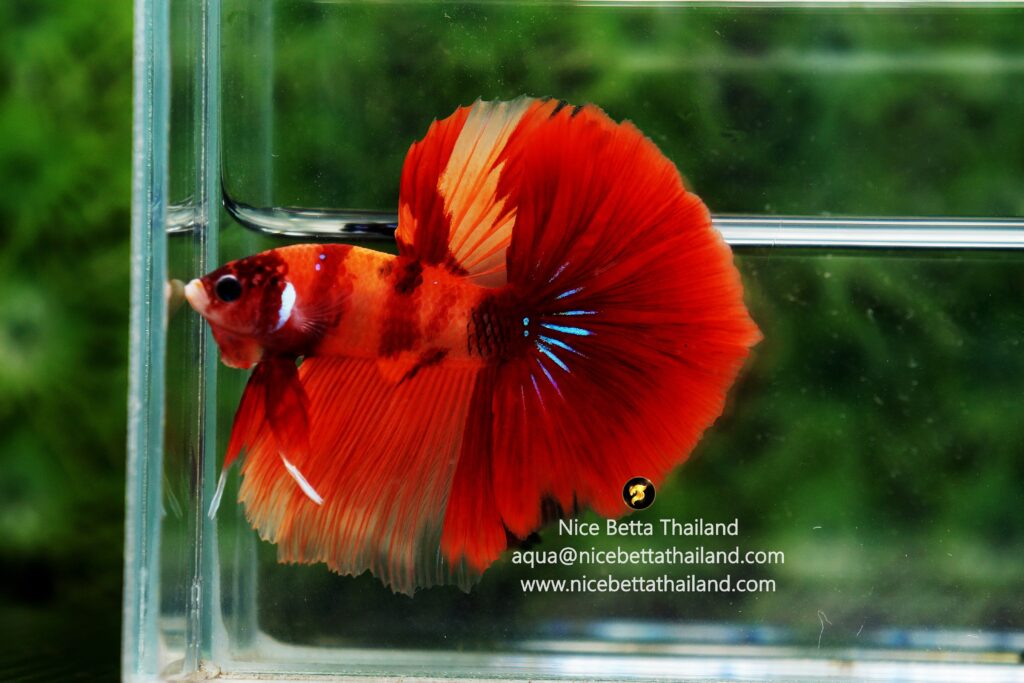
The day of the betta trip
you don’t want there to be anything else except for water in the betta’s travel tank.
When the Sun finally rises on the day of the traveling starts, you are going to want to feed your betta fish as you normally would. This is to help build suspense in your betta and truly surprise him/her when you finally announce that you are going to seaworld. Wait, maybe that would be a scary place for a betta to visit… Anyway, that was all part of a failed attempt at humor on my part anyway. Feed your betta the day of your trip as usual.
This is the big betta transfer part. You are going to want to pour the pre-conditioned water into the betta’s travel tank at this time. This is the same water that you also added the aquarium salt to. After the travel fish tank is full, very gently and carefully scoop out your betta fish and place into the travel tank.
A big thing that I forgot to mention till now is that you don’t want there to be anything else except for water in the betta’s travel tank. Don’t add any accessories. Don’t add any substrate. Substrate is what makes up the ground of the aquarium like gravel or sand. Travel can be a bumpy experience for a betta and you can avoid injury by leaving these things out. I was going to use an analogy like traveling in a garbage disposal that’s on… but I think that is too extreme. You get the point though, I’m sure. Fewer things for the traveling betta fish to snag or scrape itself on during a trip is what you should aim for. That, and the accessories could roll around and bang on the sides of the tank causing underwater explosions and the like.
Generally when you scoop out a betta and move them to a different aquarium, they have a tendency to freak out a little. You may only see a blurred line in the color of your betta bolting around the new traveling container for a while. Your betta will settle down in a few minutes. The aquarium salt that was added to this transportation tank will help with calming your betta down. You are going to want to watch your betta swim about for a while in his new transport aquarium. Check to see that he/she is swimming correctly. There shouldn’t be any problem, but you want to take action if you see any weird swimming behavior.
Now that your betta is safe (albeit a bit confused) in the traveling container, you will next tackle the chore of getting the betta’s normal tank ready for transport. You are bringing it with you to set up at wherever it is you are going right?
You are going to want to drain the water from the betta’s normal aquarium and remove any tank accessories. As for removing the accessories, you want to do this because having them roll around in an empty aquarium during transport is a bad idea. More things breaking and clanking while you travel that you don’t need to think about.
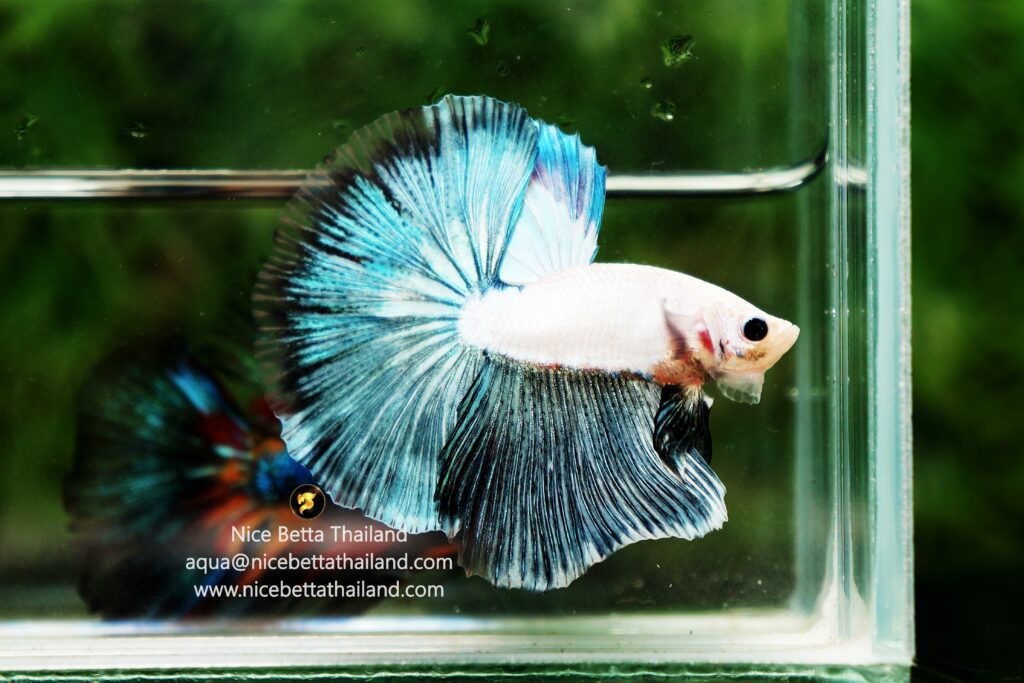
Betta learn to siphon water
For the water removal part, you can do this however you wish. Some people scoop out the water a few cups at a time, others try and tip the tank. Tank tipping may end up being a dangerous venture though, so I don’t really advise it. My preferred method is to siphon the water out of the aquarium. It’s easy once you get the hang of it and will save you a good amount of time and stress in the long run.
To siphon the water out of an aquarium, you need to find a hose of sorts. Using an old or new aquarium hose that may be nearby is fine. Keep in mind that the narrower the hose, the longer the water emptying process will be.
You start by taking the hose or tubing and inserting one end far below the surface of the water in the tank. You will also want a bucket to catch the water once it starts flowing. The top of the bucket should be placed below the bottom of the betta’s aquarium. Now the fun part. With one end of the hose in the water, start sucking on the other end of the hose. If you have chosen a see-through hose or piece of tubing, you can watch the water come closer and closer to you as you suck.
When you see the water in the tube crest over and below the top of the aquarium, you can stop sucking and quickly place your side of the hose in the bucket. If done quickly and correctly, the water should start to flow from the aquarium and into the bucket. I hope you chose a big enough bucket. It may be a good idea to have a second bucket nearby. Try to let as much water drain from the tank as you can. You are trying to make the aquarium as light and empty as possible for the transport. Tanks are heavy even when empty, so don’t hurt yourself.
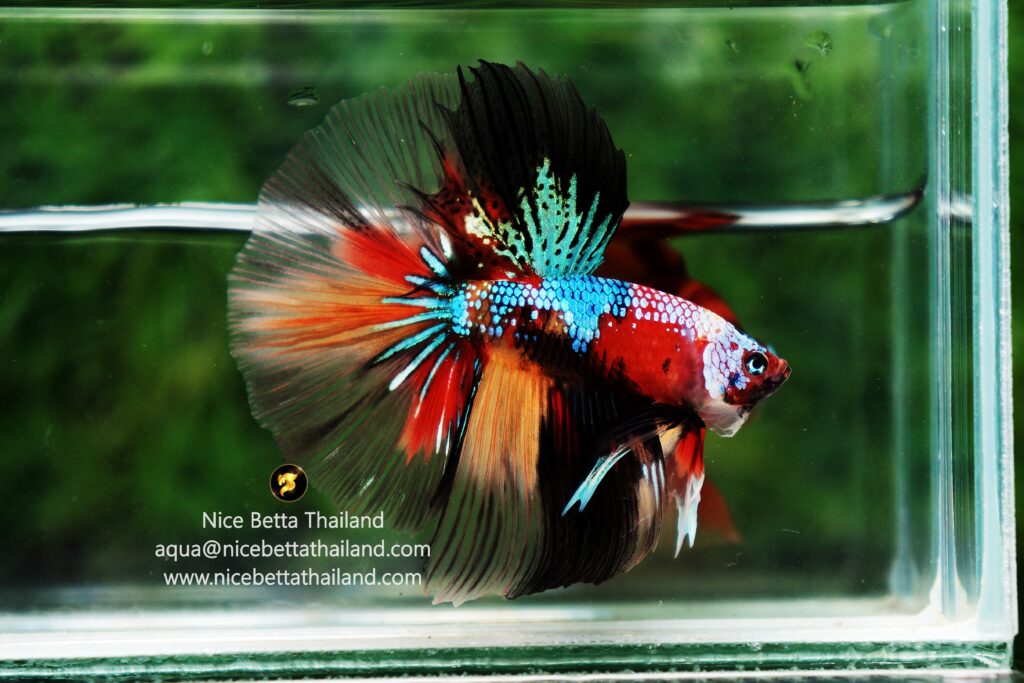
Quick clean and tie down
With the betta’s standard aquarium empty at this point, you have two options. The first would be that you take this time to give your take a good cleaning before traveling. The second being that you hold of cleaning the tank until you get to where you’re going. I leave this hard life decision solely up to you.
If, in the event, you do decide to take this time to give your betta’s aquarium a good cleaning, hit it with some good, clean water. Just a simple rinse is what you want to do right now. I’d actually advise taking the time to clean the tank before you head out as it makes one less chore to do once you arrive at your destination all wore out from traveling.
You are going to want to rinse out the accessories and the substrate as well. Cleaning the substrate can be kinda tricky sometimes. Some people rinse out the substrate in the tank and empty out the tank after every rinse. Some take the substrate out and rinse it in a separate, more manageable container.
If you have a cycled betta aquarium, you should leave the substrate wet with some of the original tank water. Same goes for the filters of a cycled tank. The reason being is that the original tank water has with it beneficial bacteria that you want to try and save. When you go to set up your cycled betta tank after your travel, it will be easier for you to get things running cycled like they were before. With that in mind, you should think about finding a water tight container for the substrate and the filter to travel in.
As for the walls of the betta tank and the accessories, after rinsing everything off, take a towel and give every surface a good wipe. Some people have a hard time with their water’s residue more than others. Do the best you can to make it pretty. Unless you don’t like pretty.
You are going to probably want to wrap up your betta’s aquarium accessories and decorations in paper towels so as not to damage them during transport. Of course, you can really use anything to wrap up your decor, I generally use paper towels though. After wrapping them all up, I’ll place them in a plastic shopping bag for easier, leak resistant (they can be wet still) transport. Also, for the love of all that is good, please take the time to wipe up any remaining water drips lingering on the walls of your aquarium! I hate water spots and so should you.
Generally speaking, what I am left with is a completely empty and clean aquarium with containers of substrate and accessories surrounding. Substrate, even when dry, can be pretty heavy, but I normally place all of the clean accessories back into the aquarium. I use the aquarium as a transport container if I can. But I leave the substrate out. If you are transporting a really large aquarium, you may opt to keep it as empty as possible. That choice is also ultimately up to you as well.
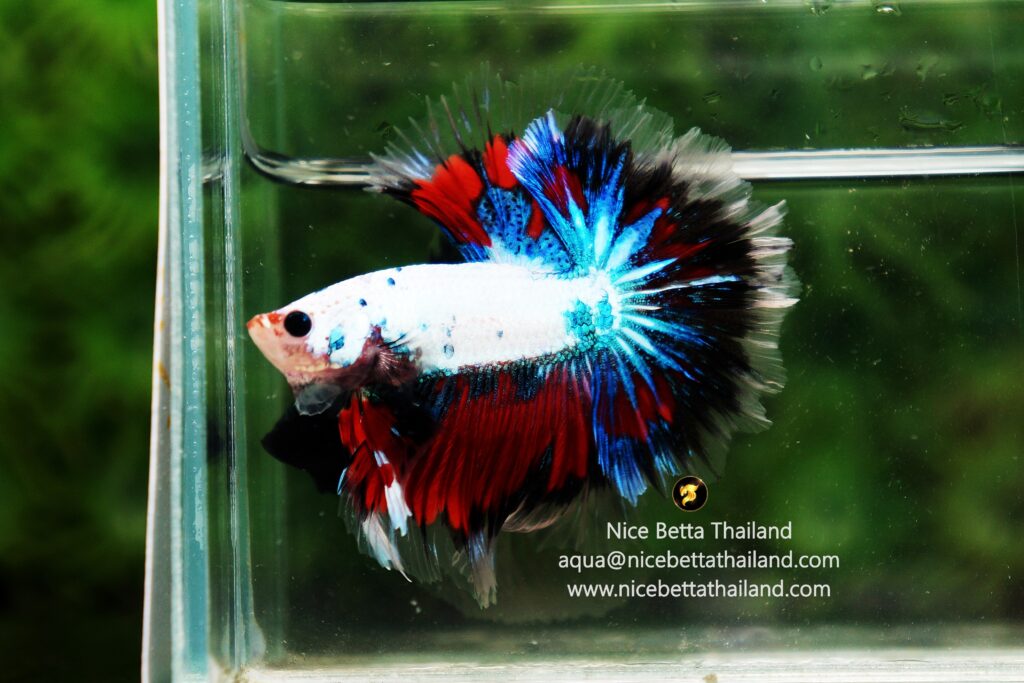
So now, take stock of what you are left with. At this point you should be left with:
- A very clean, and spotlessly dried off, empty betta aquarium.
- An almost forgotten about betta fish trying to figure out why he/she is so mellow all of a sudden.
If this is what you have at this point, you are doing good. Next up is the traveling part of this adventure!
You don’t want to have your betta strapped to the floorboard and have the heat or A/C set to full blast, but only for your feet.
At this point you should have your betta and equipment sitting in the car. Do your best to strap everything down nice and tight. Seat belts aren’t just for humans. It may take some finagling, but try and use the car’s seat belts to your advantage. If needed, bungee-cords and/or tie-downs can possibly be used. Feel free to get creative in securing your fishy cargo, but make sure to double check your work before heading down the highway. Often times the floor of the car can secure a betta better than the seat can. Also less prone to bumps down there on many cars as well. Use your best judgment with your particular car holding your particular cargo.
Wherever they are kept in the car, be mindful of the heat or air-conditioning setting in the car. You don’t want to have your betta strapped to the floorboard and have the heat or A/C set to full blast, but only for your feet. That could end up… bad. Betta fish are versatile with temperature up to a point. They can survive temperature ranges from the low 70°s to the high 80°s. You have to be careful, though, about how fast the temperature changes between highs and lows. Dramatic shifts in temperature can cause a lot of stress to a betta. Heat things up slow and cool things down slow.
Use common sense when it comes to traveling through different climates. If the temperature is going to be briefly cold and you are concerned for your fish, you can use things like jackets or towels as insulation. Water retains heat fairly well, but does a better job if even only slightly insulated. Also, obviously, don’t forget about your betta fish when leaving the car while it’s hotter than the sun outside. People worry about dogs being left in parked cars more than fish because… when was the last time you saw a fish in a car? Keep your betta fish out of direct sunlight when at all possible as well.
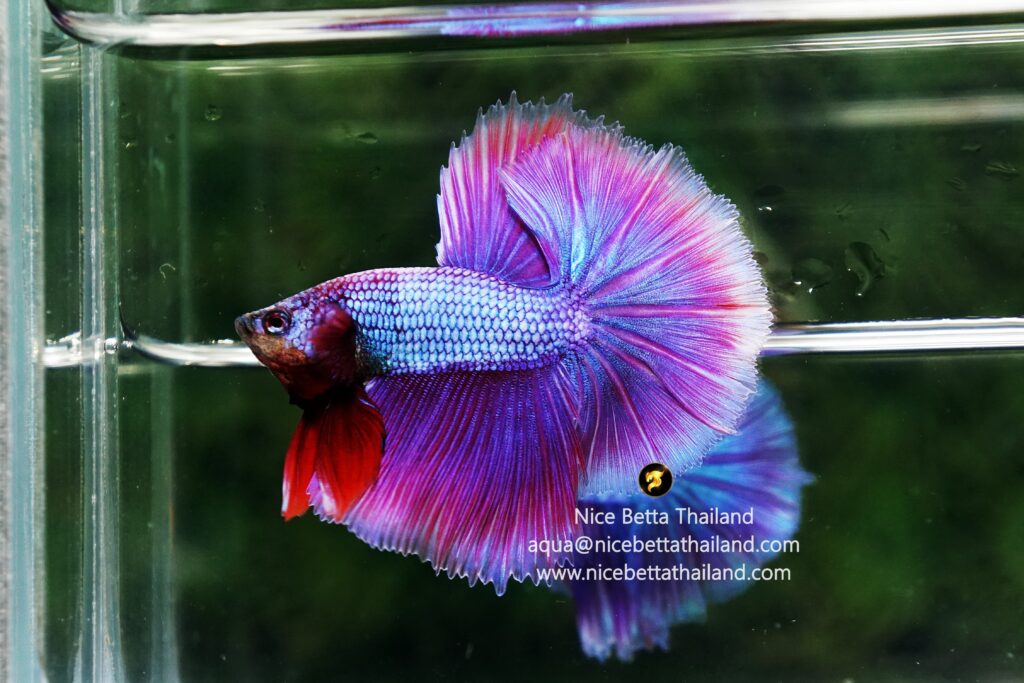
Betta fish after your travels
Well now, that was fun… right? After your traveling betta has arrived at the destination, now it’s time to set everything back up. You want to have your tank full with a new batch of pre-conditioned water. Follow the steps outlined above as nothing will change for this part. Oh, you should of course clean the tank before you fill it with pre-treated water if you skipped that part before you left home.
Set up for the tank should be the same as the reverse of taking everything apart. Well, with the exception that you should probably treat the aquarium with aquarium salt. The transition from the betta’s traveling aquarium back into the original tank may prove to be stressful. Adding that aquarium salt to the main tank will help your betta ease into his new, old, tank. Make sure that you premix the aquarium salt thoroughly inside of a separate container. Again, never add aquarium salt directly into an aquarium that a betta fish is currently swimming in. You don’t want to hurt your fish by burning him/her with undissolved aquarium salt.
When you actually go to transition the betta from the trip tank to another, please make sure that the water temperatures are the same.
You are going to want to perform a cycle, of course, if your aquariums is a cycled one. Having your betta stay an extra night or two in the fun adventure container while you get this done will be fine. Just remember that he is in there and keep doing normal betta husbandry things like keeping the tank warm. It should really go without saying that you’ll need to continue watching your betta for any behavior that seems off.
When it comes time to do the big transfer, be very gentile with your little traveling betta. Carefully scoop out your betta from the travel tank and gently place him into his newly refurbished home. As was said before, if you took the time to add a bit of aquarium salt to the main aquarium, the betta’s transition shouldn’t be a stressful one. Also, make sure that you dump out all of the old water from the temporary tank. You do not want to use this old water in your main aquarium. So, dumping it out means dumping someplace other than the main tank.
When you actually go to transition the betta from the trip tank to another, please make sure that the water temperatures are the same. Again, temperature shock is a real thing and you don’t want your betta to go through that. If you do not have a thermometer to ensure that the water temps match and want to add an extra level of caution to the transfer procedure, you can float your betta.
Floating your betta means that you will place your betta in a plastic bag full of it old tank water and float him/her in the new tank water. This will gradually equalize the temperature difference that the betta will become used to. Generally this will only take about 10-15 minutes, but I’d suggest that you go by feel rather than a timer. You don’t want to keep your betta in the floating bag very long. There’s not a lot of air for a betta to breathe in there. Again, when it comes time to transfer the betta out of the bag, don’t pour any of the bag water into the new tank.
Once you finally have your betta swimming in the new tank, watch for any abnormal behavior. If things seem on the up and up, you can feed your betta a snack at this time. Not only will your betta probably be a bit hungry after this little betta vacation, giving your fish something to eat will help lower the stress experienced from the whole trip ordeal.
The last step of this process is to start planning your next trip, but this time invite me!
If our article was useful to you You can leaving a 5-star reviews for It’s an encouragement. For us make encourage us in our research. Research information about betta fish for to present useful information further

Also we have group talk about betta fish for sale and share any new tip take care information on Web3 socialFi group

Right now we have betta fish doctor help every bettas lover by top breeder in Thailand to cure or share more tip on Animalverse social
If your bettas fish sick or need tip to treat help or join event prize with AVC Token
Let’s join the group many top breeder will help to answers in betta fish community
More info :
The most expensive betta fish in the world.
15 Common Betta Fish Diseases Prevention and Treatment
Why does my betta fish stay at the bottom of the tank
How to Keep a Betta Fish Alive for 4 Years
Should I Keep My Betta in a Vase?
All of Betta Fish A Guide on Patterns, Color in the world






